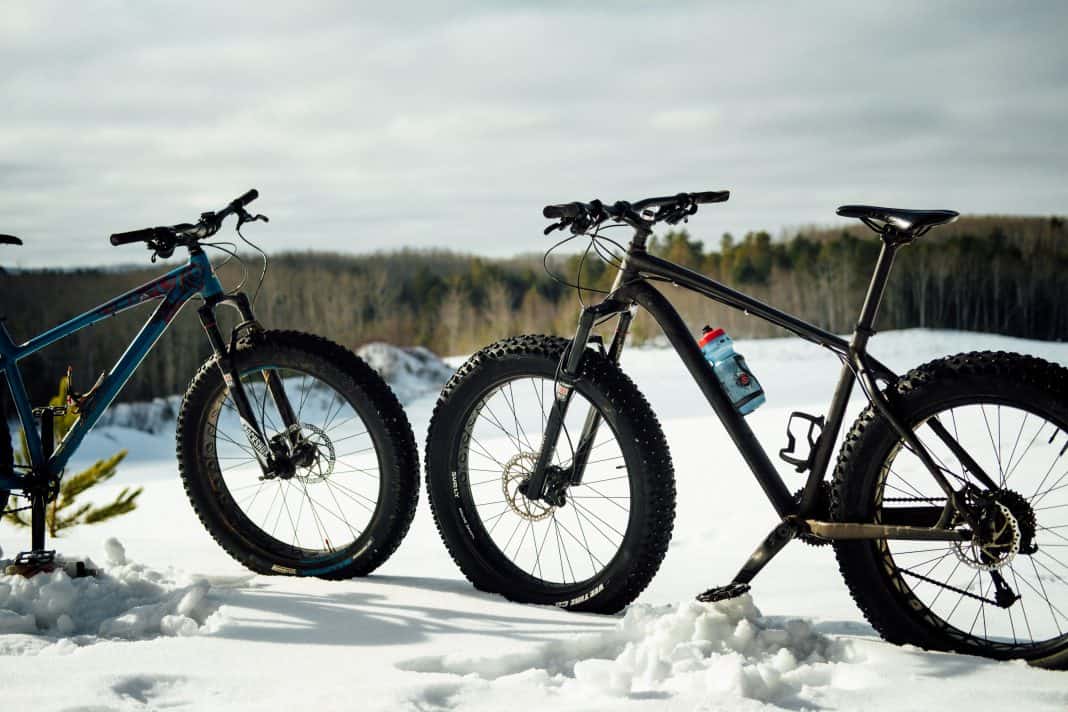One of the more surprising trends in outdoor sports over the past couple of years has been the rise in popularity of the so-called fat bike. These new rides resemble mountain bikes in many ways, but have massively oversized tires that allow them to roll over mud, snow, and sand with ease. This has opened up some new possibilities for riders and changed our perception of where we can go on our bikes. But is it a good fit for you, and how does it play into your fitness goals? Read on to find out.
Origins of the Fat Bike
The exact origins of the fat bike are a bit nebulous, although it is clear that they have been around in some form or another since at least the early 1980s. The modern fat bike—with more sophisticated components, better frames, and the namesake tires—first started to appear on the scene in the early 2000s. It was around then that this type of bike was developed independently and simultaneously in both Alaska and the American Southwest. Because of their ability to ride over snow, ice, and sand, the fat bike seemed ideal for those two environments.
Today most major manufacturers make at least one model of fat bike. What started out as a fad among a very niche group of riders has grown into a very popular segment of the cycling business. In fact, it has been one of the fastest-growing segments of that industry for the past few years, and for now that popularity doesn’t seem to be waning in any way.
What Is a Fat Bike?
As we mentioned, a fat bike resembles a mountain bike in many ways, particularly in the geometry of its frame and the components (e.g., brakes and gears) that are used. But, of course, the distinctive features of this type of bike are the massive tires and large rims that not only define its performance but also give it its unique look.
Fat bike tires are generally about 3.7–5 inches in width, with rims that are roughly 2.5 inches thick. Those tires are often underinflated (8–10 psi) to help maintain good traction on unstable surfaces. The fat bike also has wider forks to accommodate the larger tires, which only helps to enhance its already distinct looks.
Not Built for Speed
If you’re the kind of cyclist who enjoys going really fast either on the road or trail, fat biking might not be for you. The oversized tires are made for riding over rough terrain, not for speed. That isn’t to say that you can’t get a fat bike rolling along at a brisk pace, it just takes a lot more effort and a smooth surface to do so. A fat bike isn’t as agile as other types of bikes either, which takes a bit of getting used to when you first ride one.
On the other hand, those same tires that define the bike’s performance also allow you to ride in places you didn’t think were possible. For instance, the large, soft tires do well on sand and soft dirt, where even traditional mountain bikes can falter, and there is no other type of bike that comes close to its performance on snow and ice.
Beginner Friendly
Fat bikes may not be built for speed, but they are generally quite friendly to inexperienced trail riders. Because those bulky tires can effortlessly roll over nearly any obstacle, a fat bike is a great choice for someone just learning to ride off road. Also, most fat bikes generally have a ride that is best described as “floaty,” which can make an uneven trail much more tolerable for those who aren’t accustomed to a rough ride.
All-Season Riding
One of the best reasons for taking up fat biking is that it allows you to ride outside all year long, no matter the conditions. Traditionally, road cycling and mountain biking come to an end during the winter months, as snow and ice make it difficult at best to continue riding. Those surface conditions aren’t a concern with a fat bike, which allows you to ride with confidence even in the dead of winter. This versatility has helped to make this type of bike very popular in places where that season tends to linger for far longer than it should.
It’s a Great Workout
Because those big, bulky tires are tough to get rolling, let alone maintain any kind of speed, riding a fat bike can require a lot more effort than a road or mountain bike. That makes it a great workout for someone looking to lose weight and improve their overall physical conditioning.
Believe it or not, studies have shown that you can actually burn more than 1,000 calories per hour while riding a fat bike. That is an incredibly high number and a testament to how much work it takes to keep those large wheels rolling. That is much higher than other types of cycling and puts it on par with the most intense workouts available.
If you’re looking for a form of exercise that is both intense and fun, fat biking just might be the right choice for you. This type of cycling is very forgiving in terms of riding technical trails, but it still provides a great workout.



